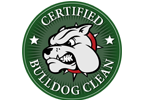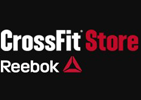Ask yourself this question. Do you feel you warmed up correctly for the workout you’re about to perform? If you’re unsure, chances are you could have had a better warm-up which would have led to a better result during the workout. Warming-up is not just time to gossip with your friends and other athletes, but it’s also a time to correctly prepare your body for the work your going to demand of it. Think about if you were going to go race someone in the 100m dash. It wouldn’t be the best idea to just do some jumping jacks then proceed to push your body near 100% effort. You need to make sure to correctly warm-up the proper muscle groups for the proper work. Think about this next time you come to class and what you need to do for your own body to prepare.
5 Things to Remember When Warming-up:
1. Static Stretching vs. Dynamic Stretching. Both are effectively good and very important to do. Static stretching is holding a position without any body movement, like stretching your hamstrings by holding your toes with your legs straight. Dynamic stretching is active stretching; stretching during controlled movements, like leg swings. Note the difference between the two (I will go into detail on this in another article – join the newsletter to stay up to date). When you statically stretch, its like taking a rubber band and pulling on it. When that rubber band is “cold” it can be difficult to stretch it and even cause injuries like muscle pulls/strains. So, prior to statically stretching muscle groups, make sure to get a good dynamic warm-up in.
2. Warm up the muscles/joints that are going to do the most work. If the workout that day is heavy back squats or “Karen” (150 Wall Ball Shots for time), make sure to thoroughly warm-up your lower half. Your class warm-up should be sufficient enough for the demand needed by your body, but think about your own personal weaknesses. If you know you have tight hips or tight hamstrings, I recommend spending those extra 3-5 minutes stretching them to ensure they are ready to go.
3. What’s your focus for the work your going to do? Are you going for a PR or trying to break a record? Maybe you’re just going to get the work in because you’re getting over a cold. Either way, you need to know how to approach the workout. This will also dictate how you need to warm-up. The more demand, the more prep. Plain and simple. Keep that in mind.
4. Getting your heart rate and blood pumping. You may not think the warm-up should make you sweaty and raise your heart to the point where your out of breath, but this is not necessarily a bad thing. Again, a proper warm-up should prepare your body for the demand necessary to perform the work you’re going to ask of it. If your heart rate is not elevated and you’re not very sweaty, do something else to get ready. A higher heart rate improves blood and oxygen flow to soft tissues prior to exertion and increases your overall core temperature. Hence the term “get your body warm.”
5. You have got to mobilize. Everyone has mobility issues and focusing on those issues is a big determining factor is preventing injury and having a higher performance in workout. There is a ton of information out there pertaining to mobilizing, which can be overwhelming. Go to your most trusted resource, your coach, and ask for advice to help with your individual issues.
Join our newsletter to stay up to date on blog posts.








